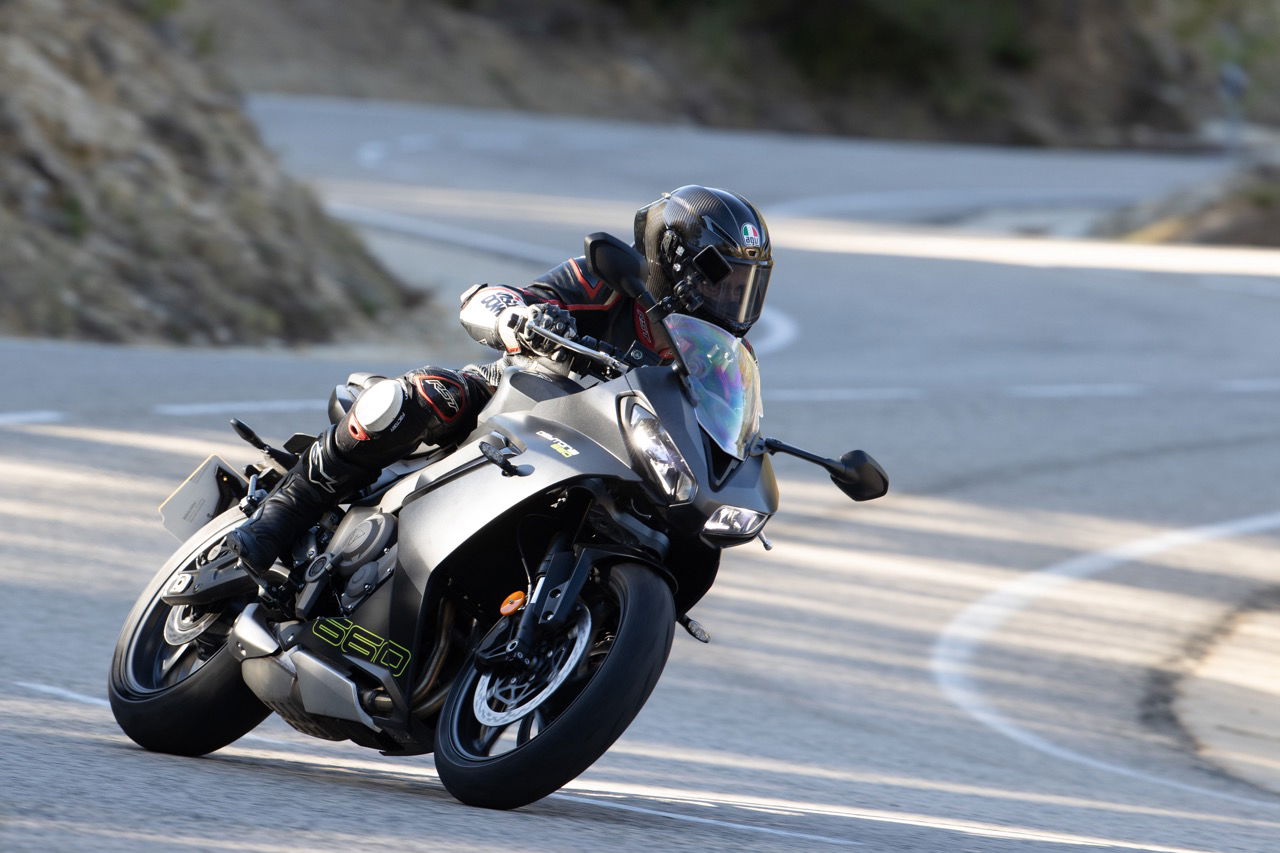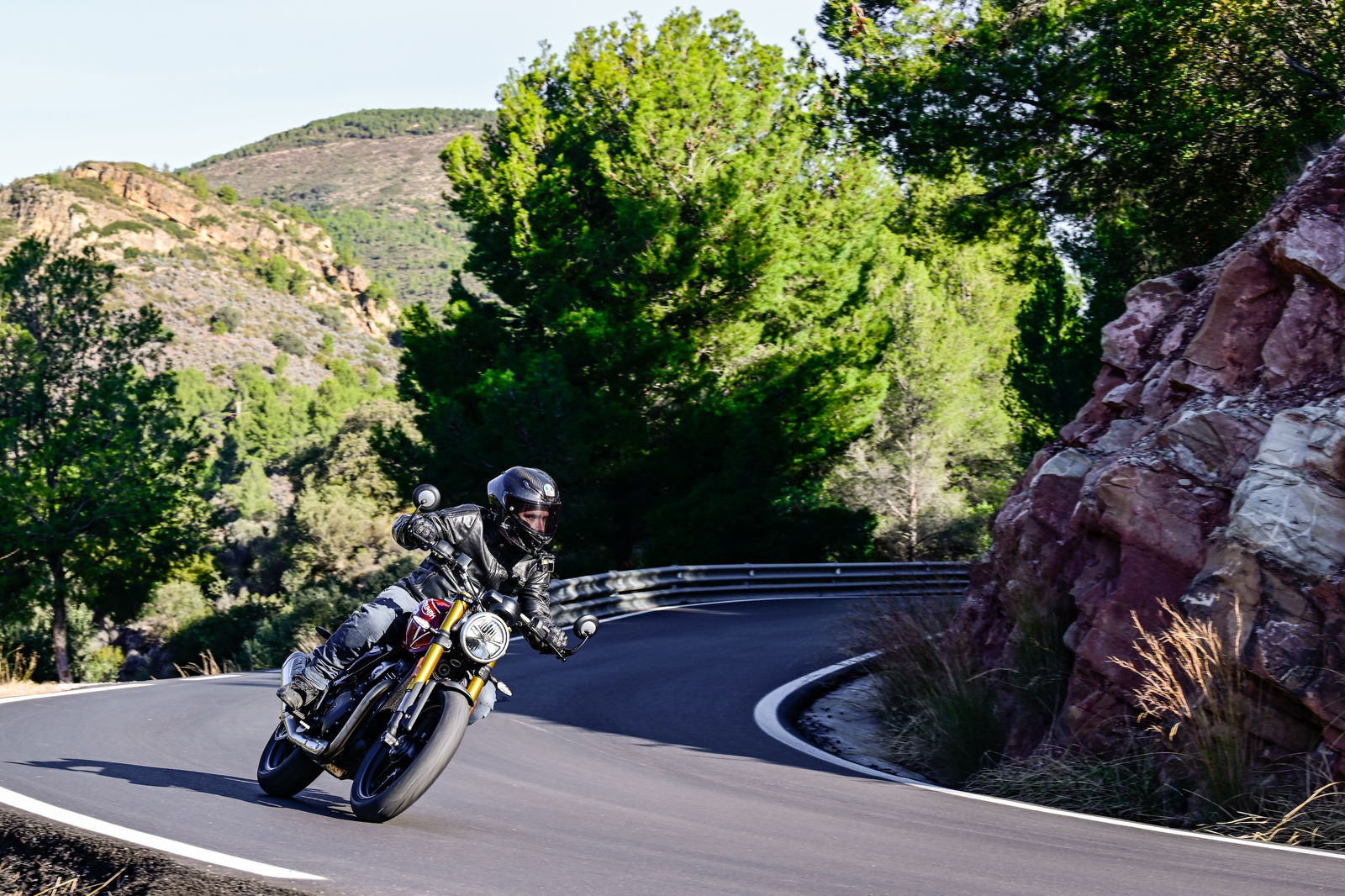Sur-Ron Ultra Bee review: a quiet revolution in green laning
As Sur-Ron releases its latest electric enduro, we wonder if the new Ultra Bee could be the ideal machine for UK green lanes and trails

I’ve been there before myself, quietly trundling along a legal and completely unrestricted byway, only to be met with disapproving looks and verbal abuse, and even threats from other users, both pedestrians and cyclists.
It’s not a constant by any means, but it happens, and it almost seems like no matter how considerately you ride on the lanes, sometimes you just encounter somebody who simply wants to get riled up so they can shout at a biker.
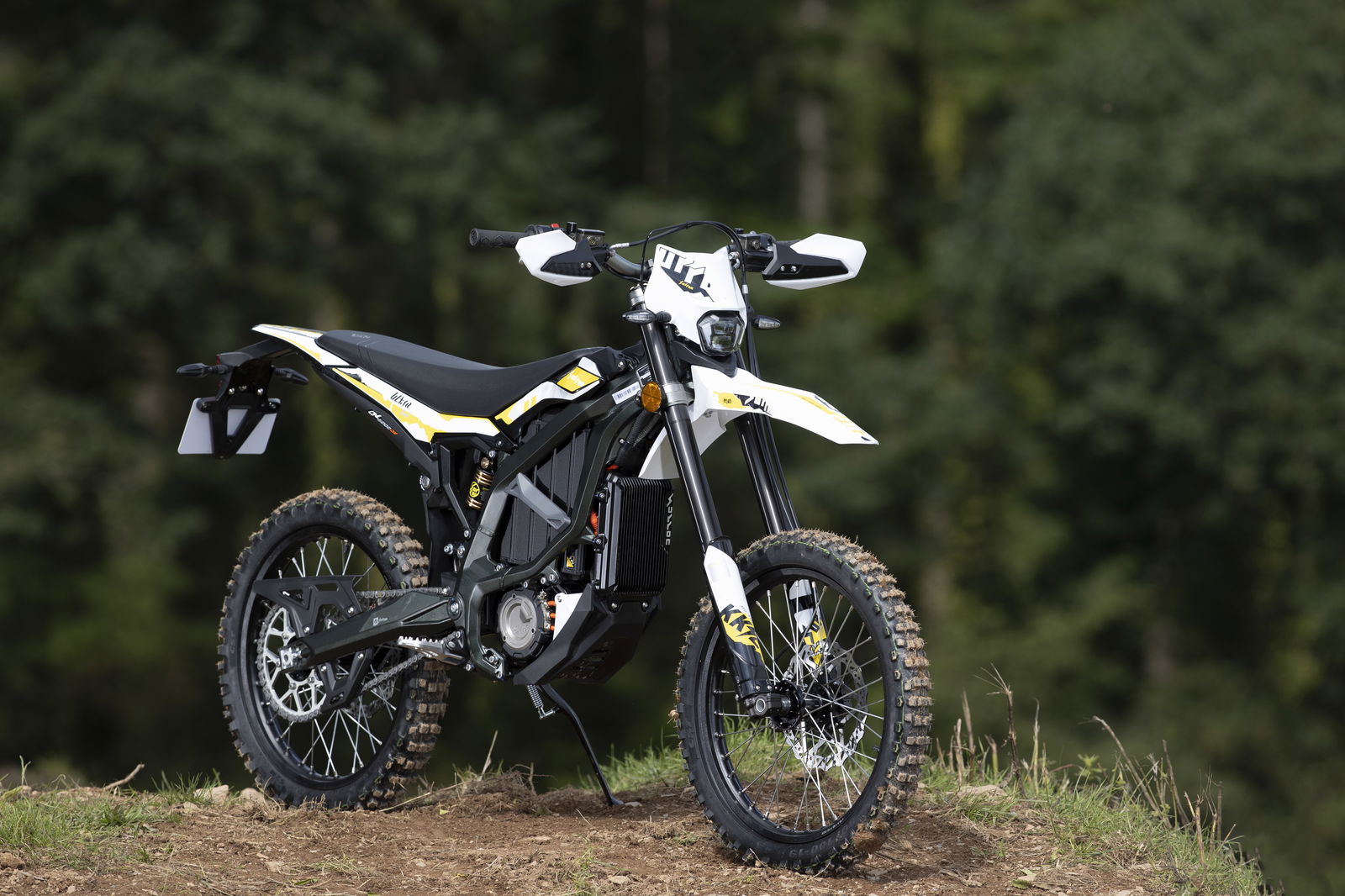
One thing that can combat this is using an electric bike - they just seem to calm the tensions, and when a walker or cyclist sees a bike coming towards them, they are effectively bamboozled by the lack of noise and exhaust smoke, rendering many of their arguments pretty much useless.
One such bike I’ve been testing that can do just that is the Sur-Ron Ultra Bee, an all-electric road-legal enduro bike.
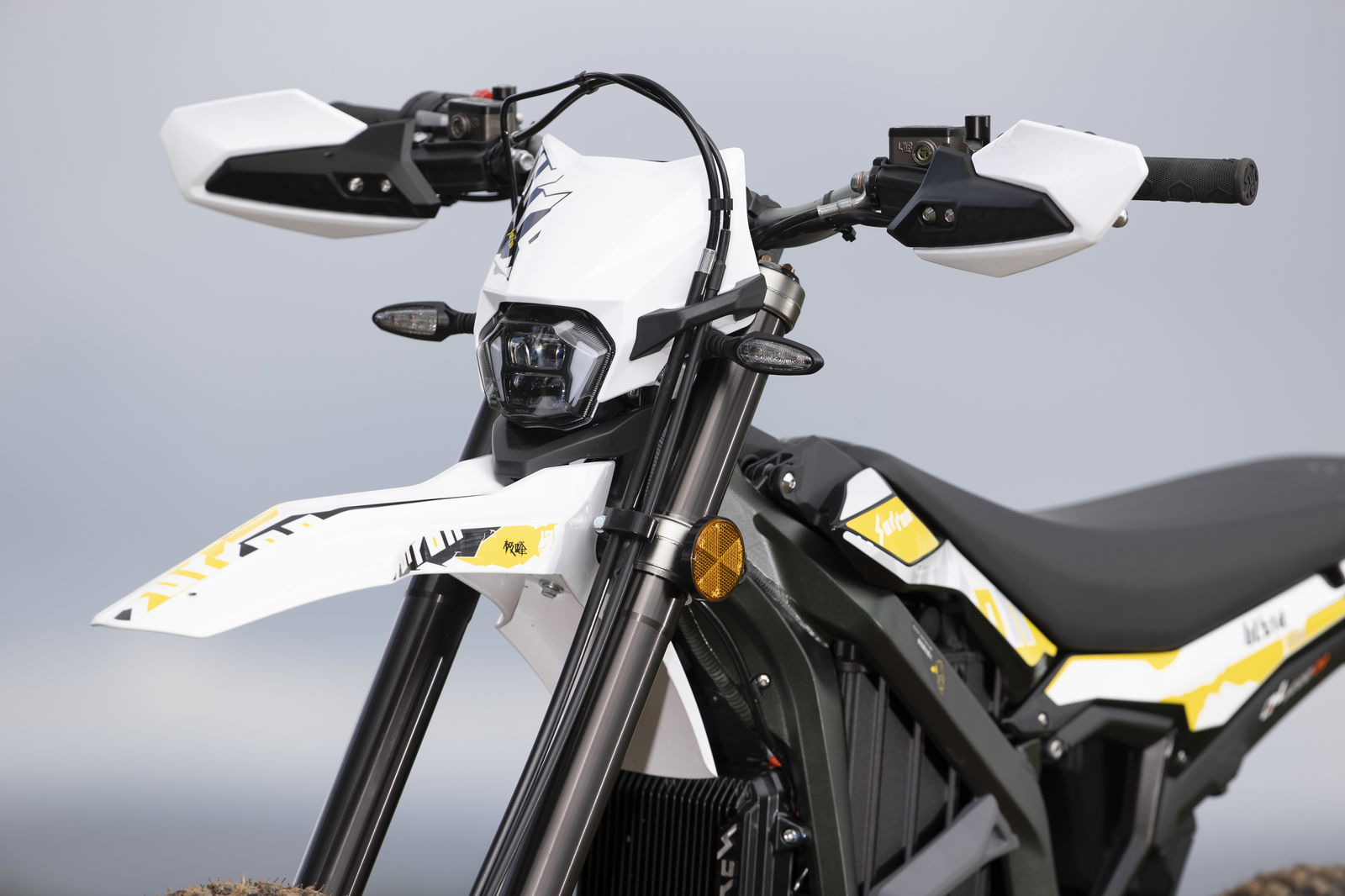
Price
The road-legal bike (the Ultra Bee T) I’ve been testing comes in at £5,999.00 incl - you also get a £500 kickback in the form of the government’s EV grant. If you don’t ride on-road, and have access to a private off-road area, there is also the Ultra Bee X which comes in at £5,799 and comes without any of the associated kit for riding on the road. As it’s an ‘off-road’ only machine, the T version doesn’t benefit from the £500 EV grant payment.
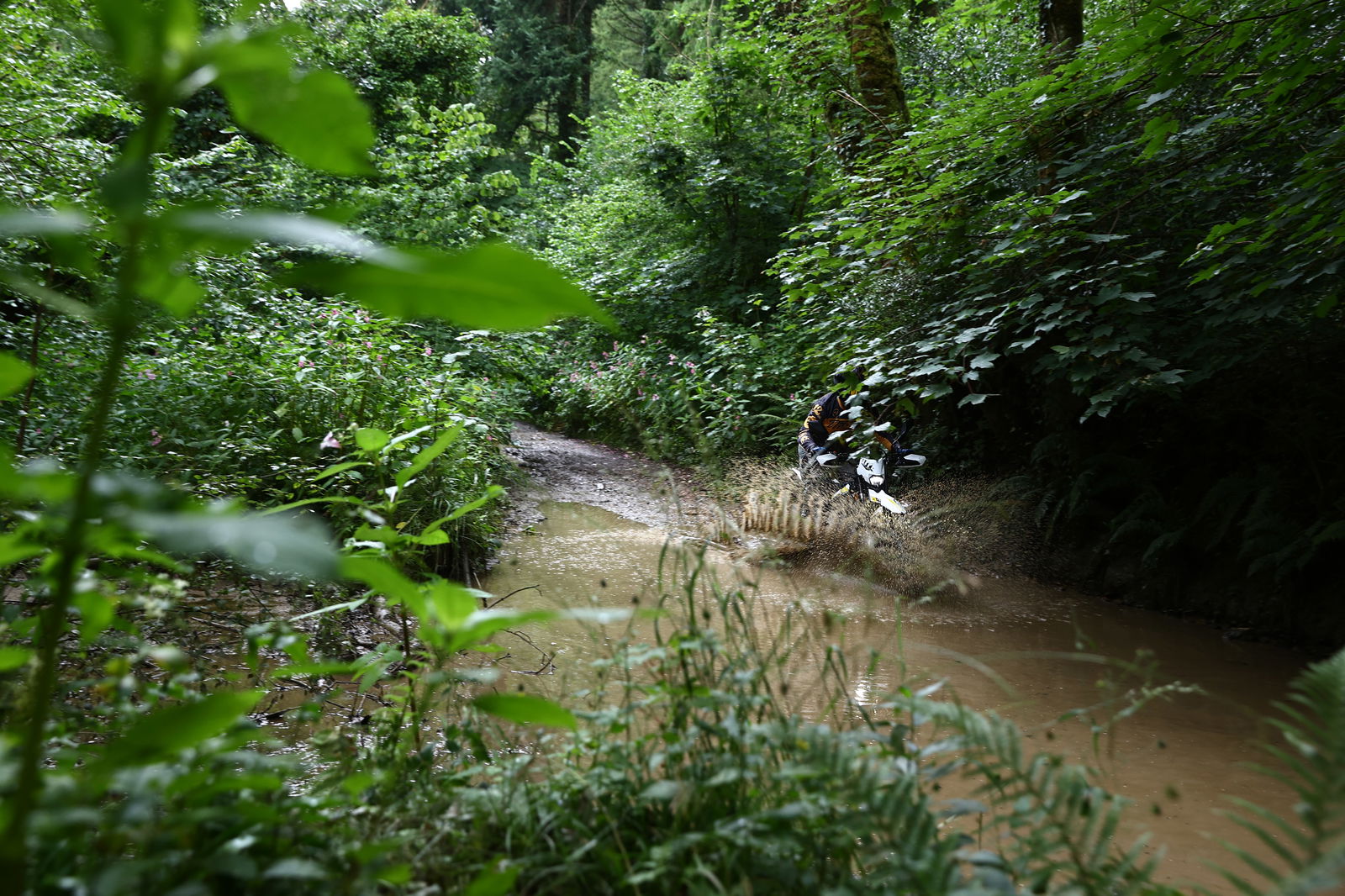
Why electric bikes so well suited to off-road riding
I’ve already mentioned the one big bonus (above) of an electric bike in this scenario, but some others go along with the calming effect of battery power. For one thing, green laning tends to happen at a slower pace than on-road riding, and without all those long stretches at full throttle, you’ll find the battery will last considerably longer than it would on the road.
There’s also something about the way an electric bike delivers its power, and a bit like with Osets and Electric Motions, have otherworldly amounts of torque just a twist of the wrist away makes almost any obstacle seem that little bit smaller.
Electric bikes also tend to be devoid of things like clutches and gears, meaning you have less to think about when you are navigating tricky sections, and you can focus more on the things that matter, like the line you need to take, your body position and so on.
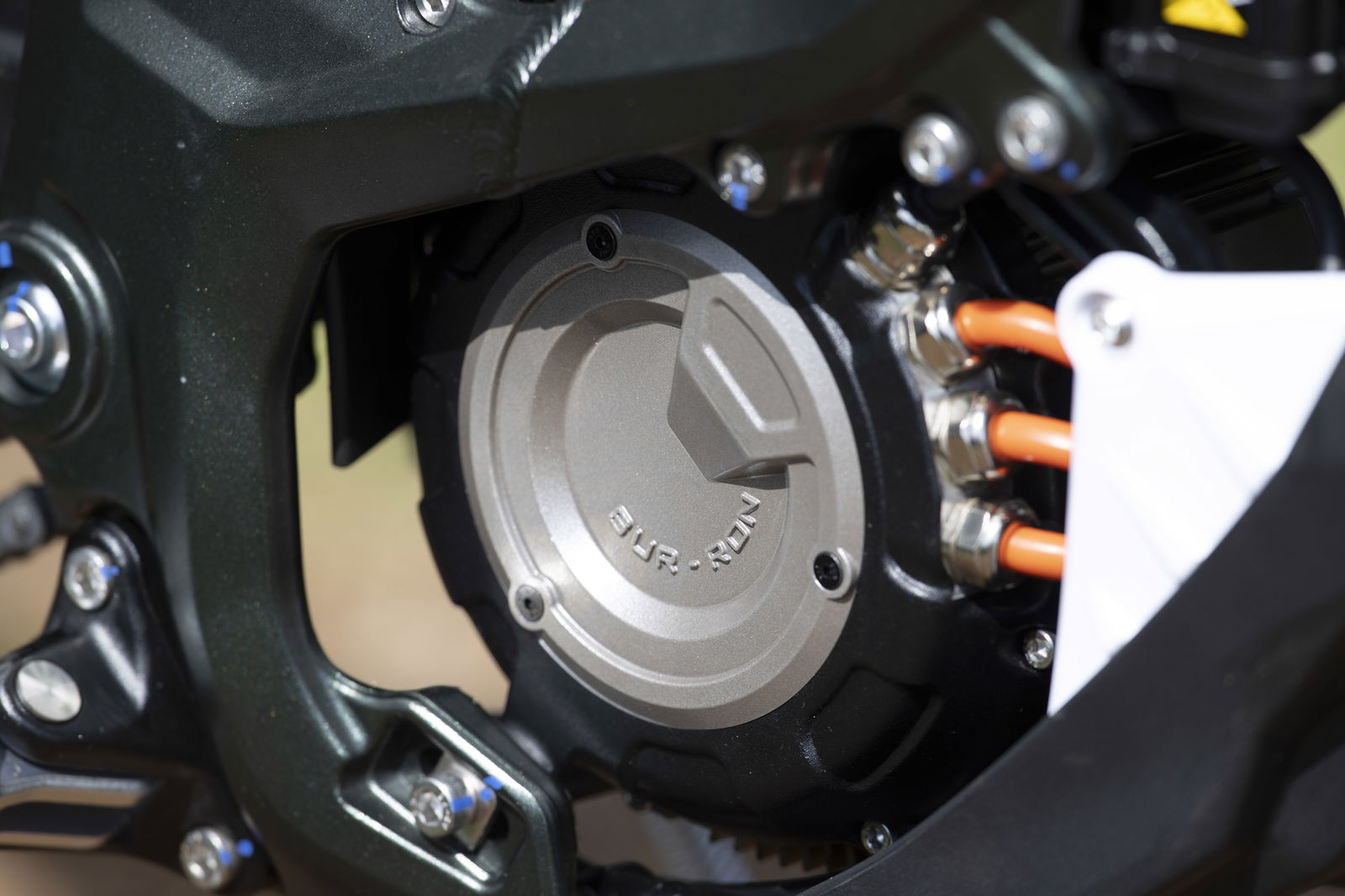
Sur-Ron Ultra Bee range review - range and recharge time
I picked up the Sur-Ron from the UK distributor around 25 to 30 miles from home. It wasn’t the kind of riding the bike is designed for though, with most of it being dual-carriageways which would have meant sitting at the bike’s quoted maximum speed of 55mph. It did though give me a chance to test the bike in a worst-case scenario, and with a full battery, I set off on a chilly winter’s day.

My first impression of the bike is that it’s not quite as wild as I imagined it would be. The connection between the throttle and the motor is great, and Sur-Ron has weighted the mechanism so it actually feels like a throttle. The brakes feel good, and despite being warned about how sharp they were, I’m not having any issues on that front at all. You will have to watch how much braking power you dial in though, and with knobbly tyres, freezing-cold temperatures and no ABS, I’m mindful of not getting greedy, especially with the front brake.
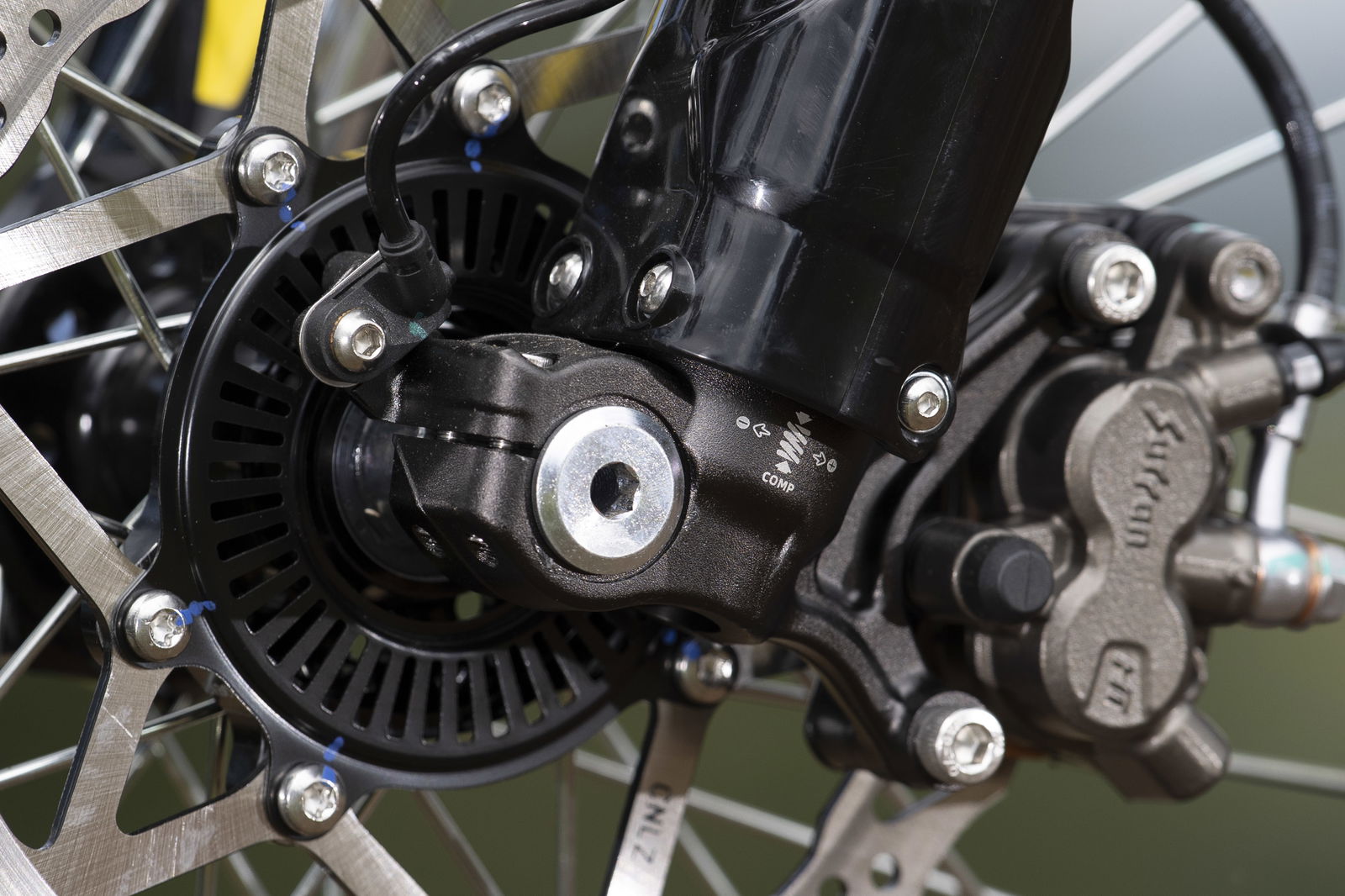
After a few miles of country lanes, I hit the nemesis of any electric bike - the dual carriageway. They just don’t suit sitting at cruising speeds for long periods, and to ensure I’m not falling prey to any of the HGVs that I’m sharing the road with, I’m forced to sit at the bike’s maximum speed and occasionally nudge the heady heights of 57 mph.
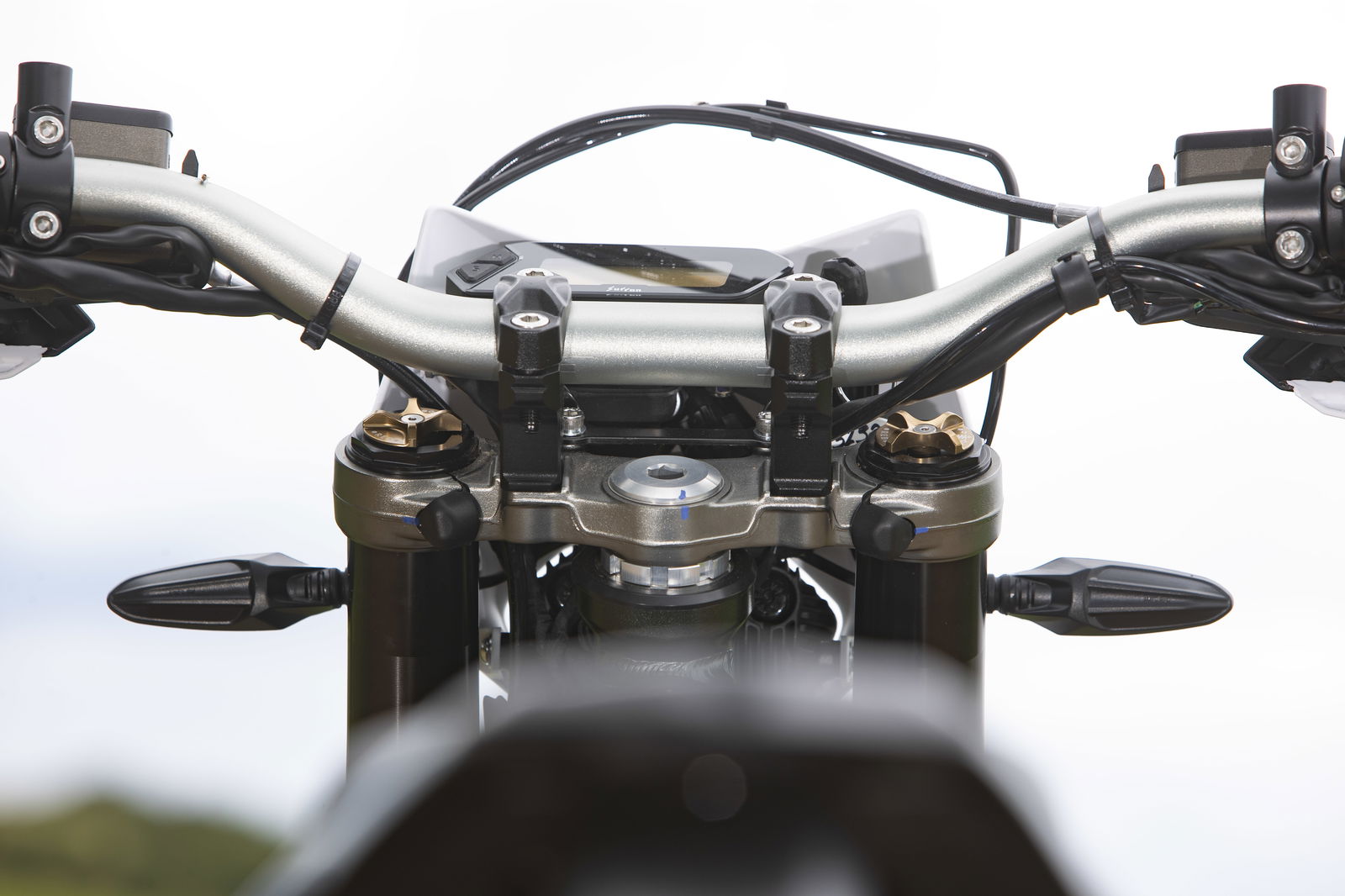
After a fairly steady ride home, I eventually arrive home with 52 per cent left in the 74V, 55AH battery pack. Sur-Ron claim range of 87 miles, and while on the face of it that doesn’t seem to be achievable based on my experience, it’s important to note that most of my journey was on dual carriageways and the claimed mileage is calculated as the maximum range, based on less taxing, mixed-use riding.
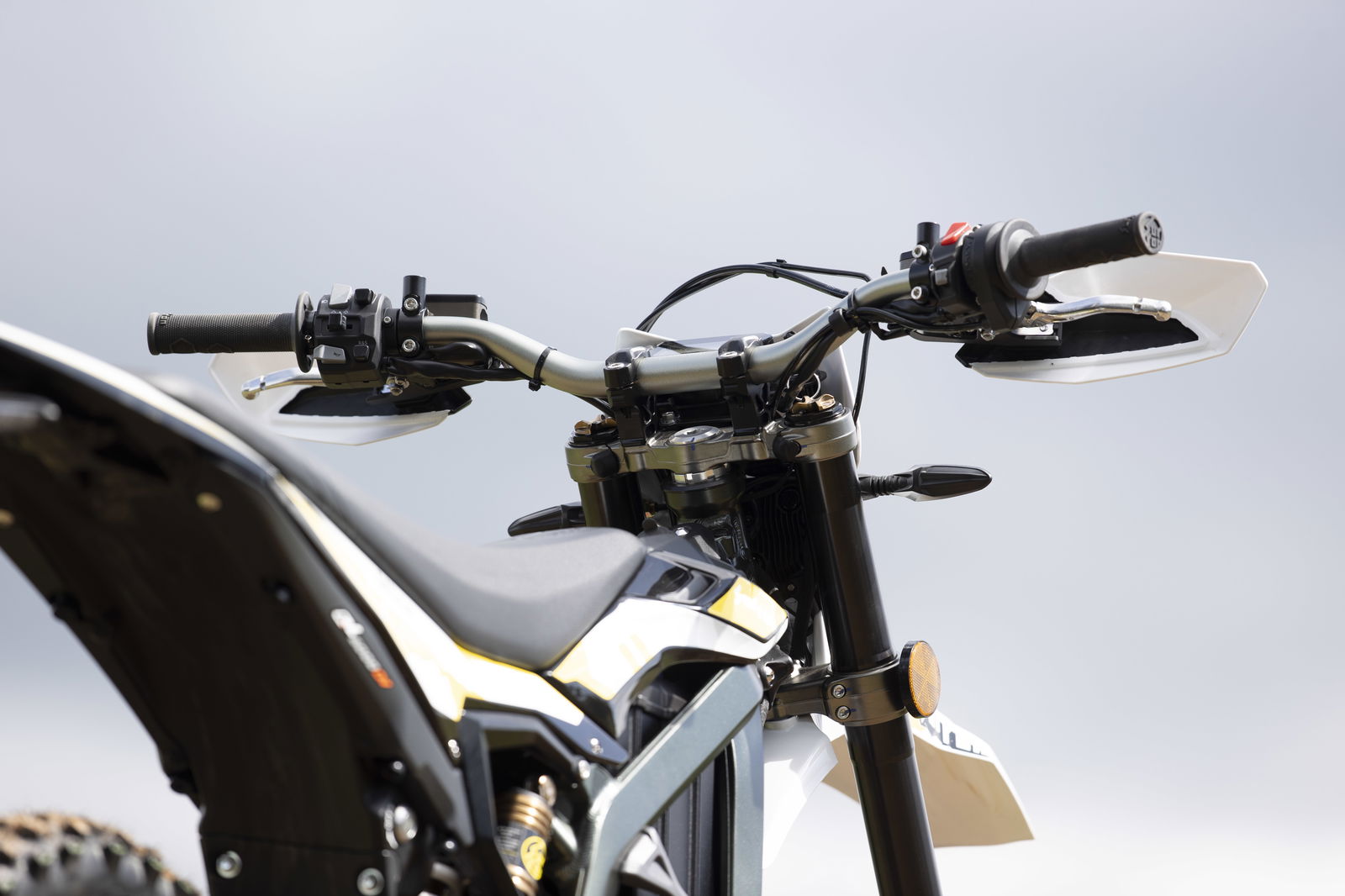
Once I’m home I have to get the thing on charge, and it’s all surprisingly simple. Under the seat of the bike is the charger, which you can either leave there or pull out and use as an external charger. You feed the XLR-type connection from the charger to the socket on the side of the battery, slot in the three-pin domestic plug and sit back. It has a claimed recharge time of four and a half hours and my bike took just over two hours to get back to 100 per cent, so I’d say that’s about right.
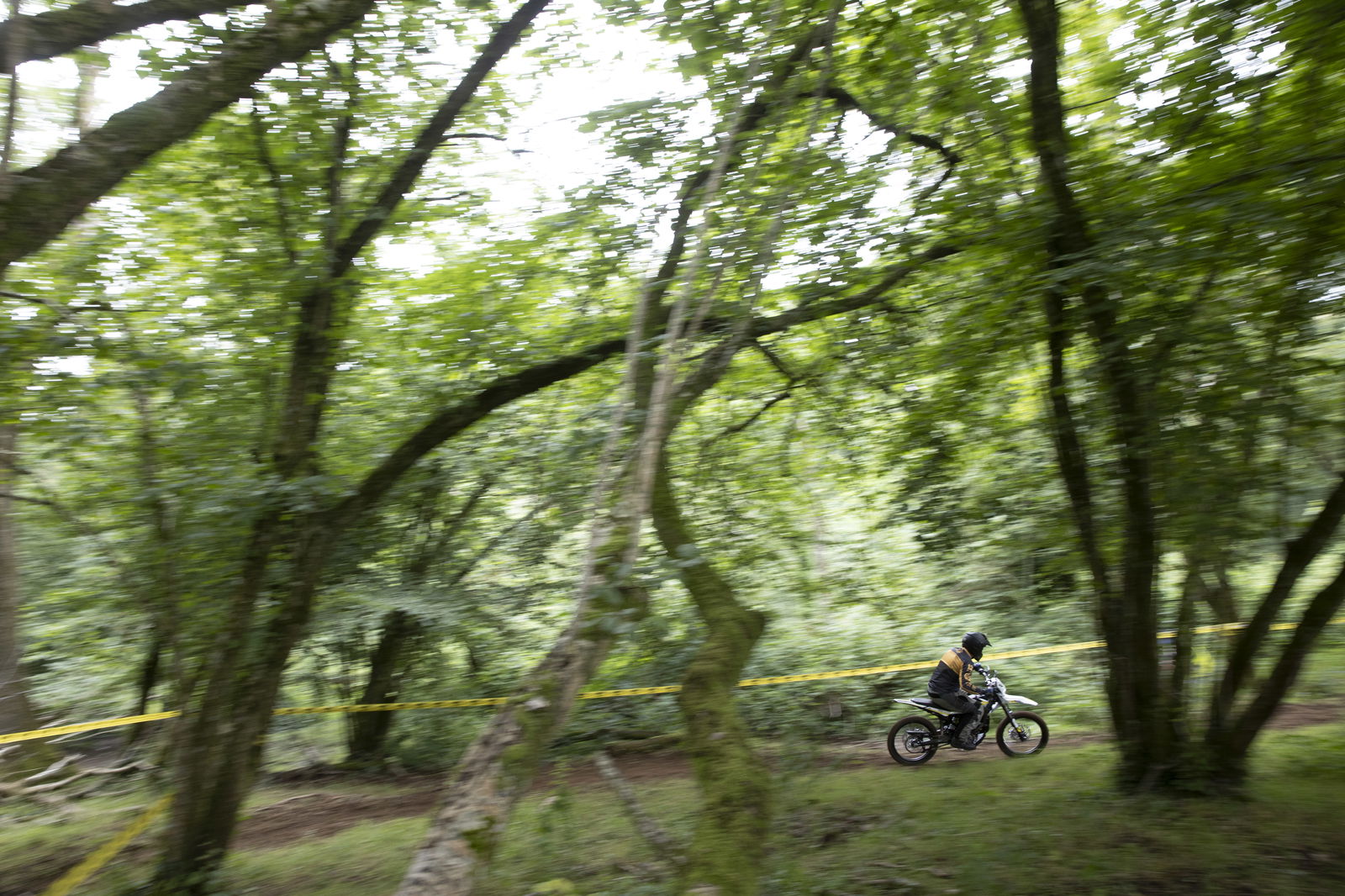
On-road handling
The road handling is as you’d expect from a featherweight (88kg) enduro bike. It’s super slim, very agile and with instant throttle response great at darting through the traffic. The tyres are the limiting factor on the road, although you can get road-biased rubber to fit it, which would turn it into a mega short-distance commuter bike with supermoto tendencies.

Off-road handling
Sadly I didn’t get out on the Sur-Ron in its natural habitat as much as I’d have liked thanks to last-minute launches sending me off around the world. I did though spend enough time on some local green lanes to get a feel for how it performed, and it’s a competent little thing. It helps massively to have such a light machine when riding off-road, and the Ultra Bee is about as light as a bike gets. But it’s also got some premium chassis features and a nice feel to the long-travel (240mm) suspension. It’s fully adjustable kit fitted to the Ultra Bee and the quality of it is very good. From the sweet anodised fork adjusters to the plush feel as you reach the bottom of the stroke, you get the feeling Sur-Ron hasn’t scrimped on the chassis hardware. The rear shock is equally as well set up, and with the same amount of travel as the front forks and ground clearance of 318mm, there doesn’t seem much that the bike can’t get up, over, or through.
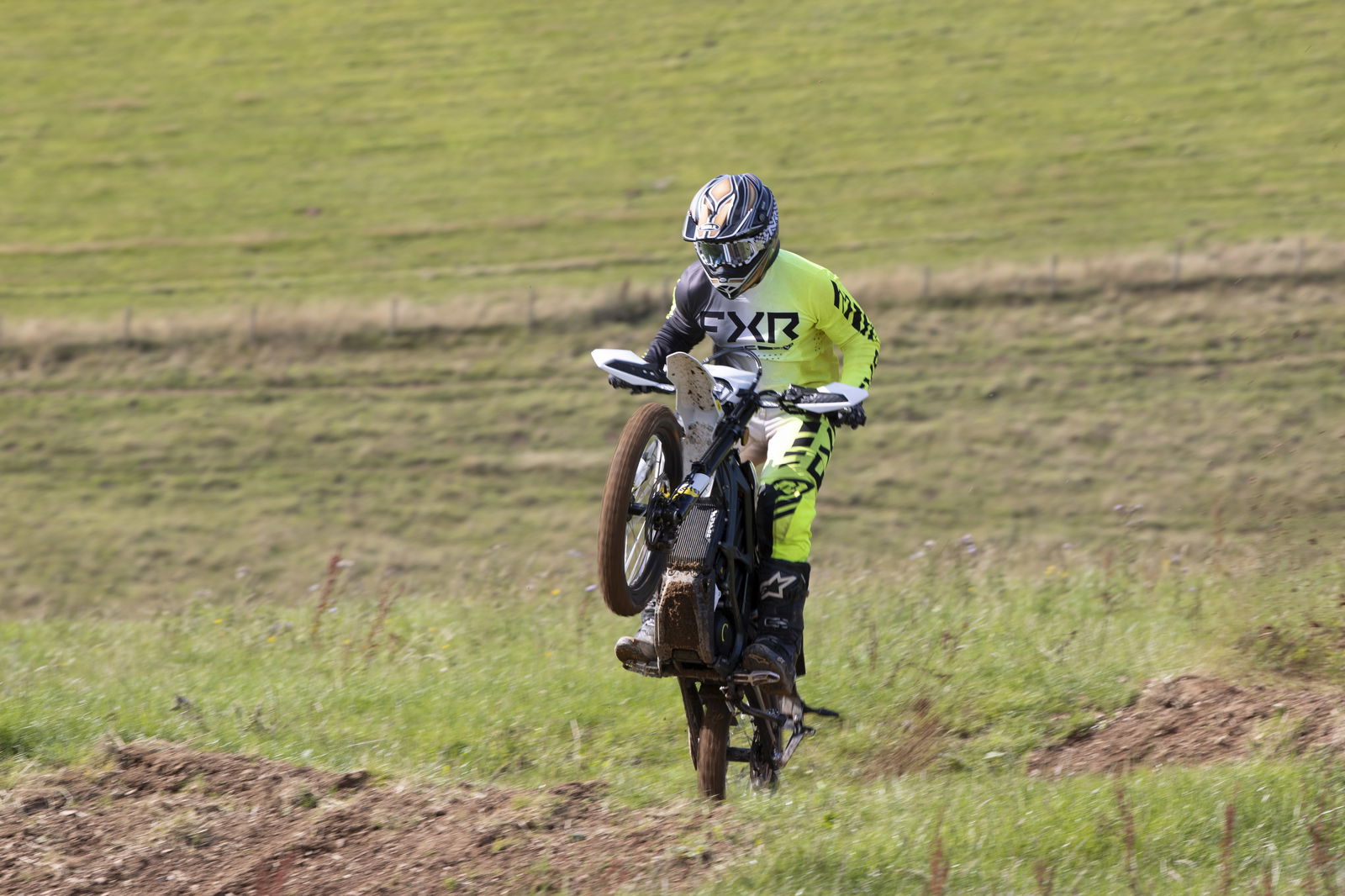
If anything was hampering the performance on a muddy trail, it’s the torque. With over 320lb ft on offer, you’re constantly leaning on the bike’s rudimentary traction control system (internally called Sur-Ron Traction Control System - STCS) and at times it feels a bit like I’m riding the bike with road traction control dialled in. You can nip into the bike's dinky LCD dash and reduce the level of intervention, but it’s not the most intuitive of interfaces and I was always conscious of mucking up the settings. If there is one thing that could enhance the experience, it’d be a little TFT so you can actually check and change the settings more easily.
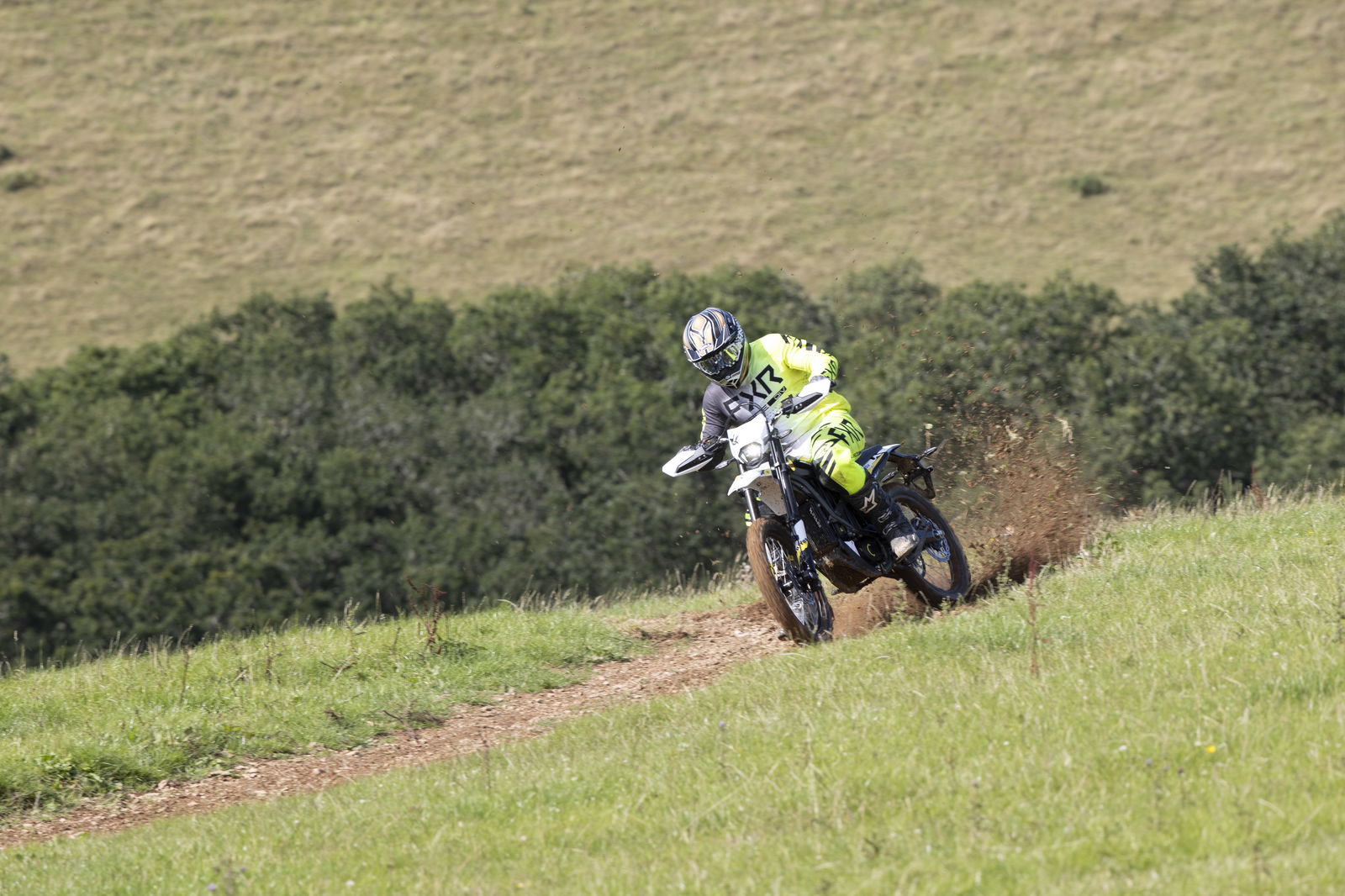
If there’s another area an owner might want to tweak it’s the tyres. They are okay up to a point, but I found them to clog up fairly quickly turning the tyre into a slick and giving next to no grip. It’s something that will obviously be worse on clay and really muddy trails, but if you are serious about green laning you’ll probably want to be serious about your hoops!
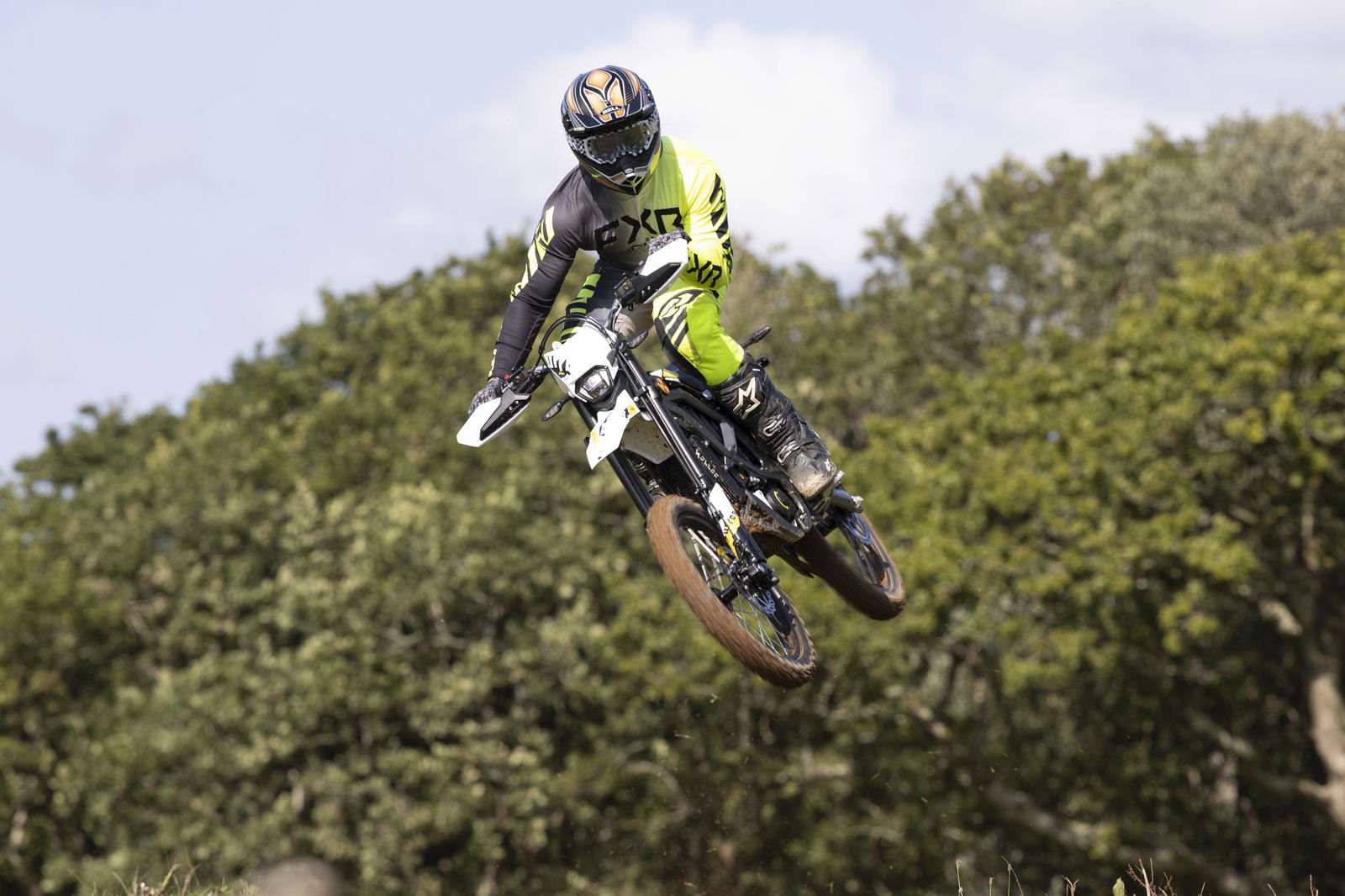
Should you buy a Sur-Ron Ultra Bee?
So, the question is; could you consider the Sur-Ron to be a rival for a petrol-powered 125 or low-powered 250cc dirt bike? When you are out and about and actually riding the thing, yes. Especially for less experienced riders, the Ultra Bee is a bike that anyone looking at a low-capacity dirt bike for green laning should consider. The problem arises when you run out of power. A fuel stop on an enduro bike takes minutes. You’ll be refilling the batteries of the Sur-Ron for considerably longer, and there aren’t many plug sockets in the middle of Thetford Forest.
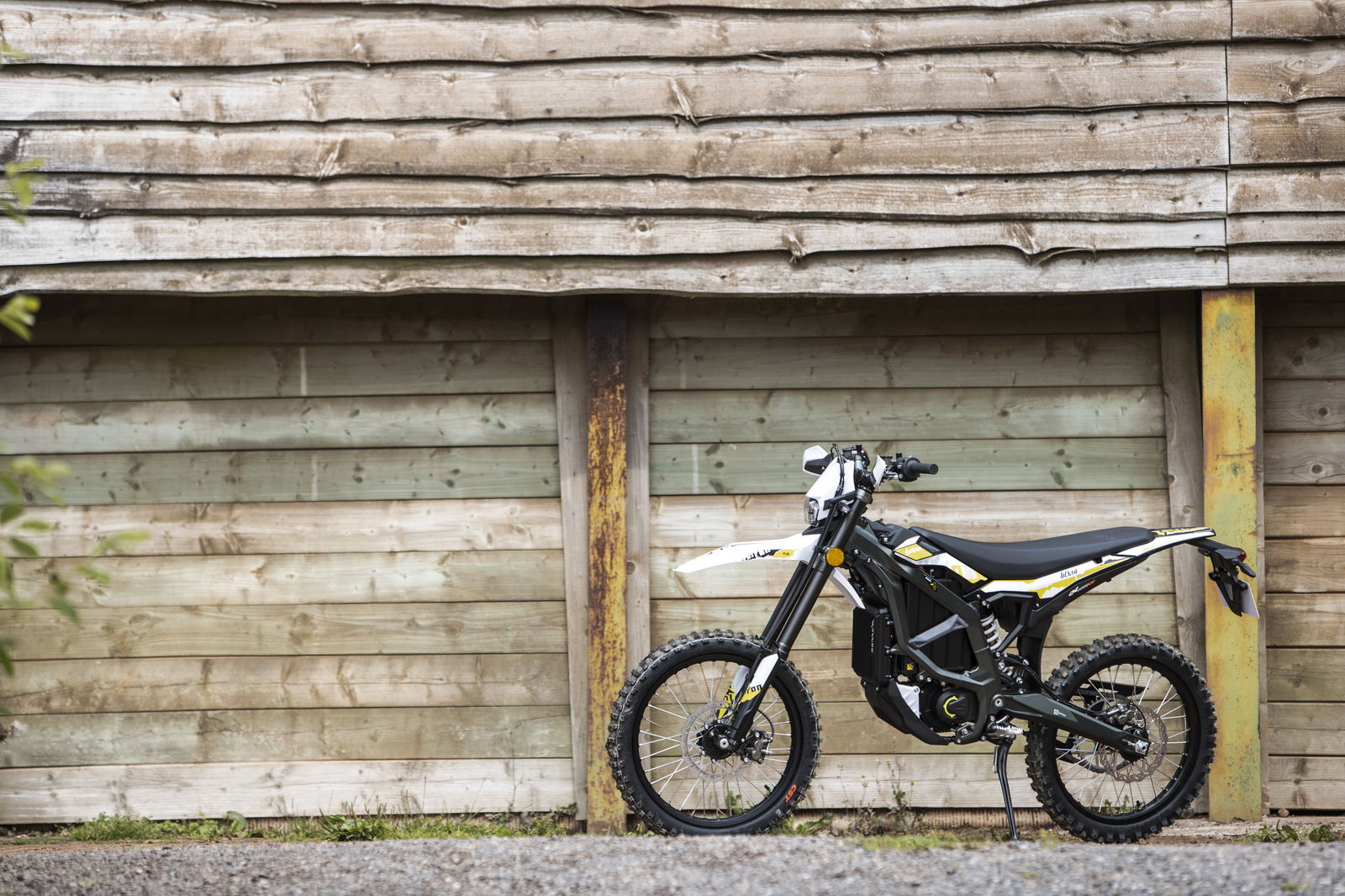
Should you though be one of the people in the UK who lives in an area with rideable green lanes (literally) on your doorstep, or have a way of transporting the bike to a lane, it’s worth a look to see if battery power is for you.
You could also consider the Ultra Bee to be an ideal short-distance commuter, and with its featherlight weight, slim dimensions and readily available torque it does excel when riding around town. Should you have the option of sticking the thing on charge once you reach work, even better, you could easily commute 45 miles each way on the bike, and still have some battery left in reserve should you want to nip out at lunch and grab some food.
You could argue that Sur-Ron needs to address the public perception of its bikes. The problem is they have a reputation for falling into the wrong hands - those who often won’t be riding them safely or legally. It’s a shame, as they’re great tools when used in the right way, and if more respectable riders do throw a leg over one, they’re in for a pleasant surprise.
